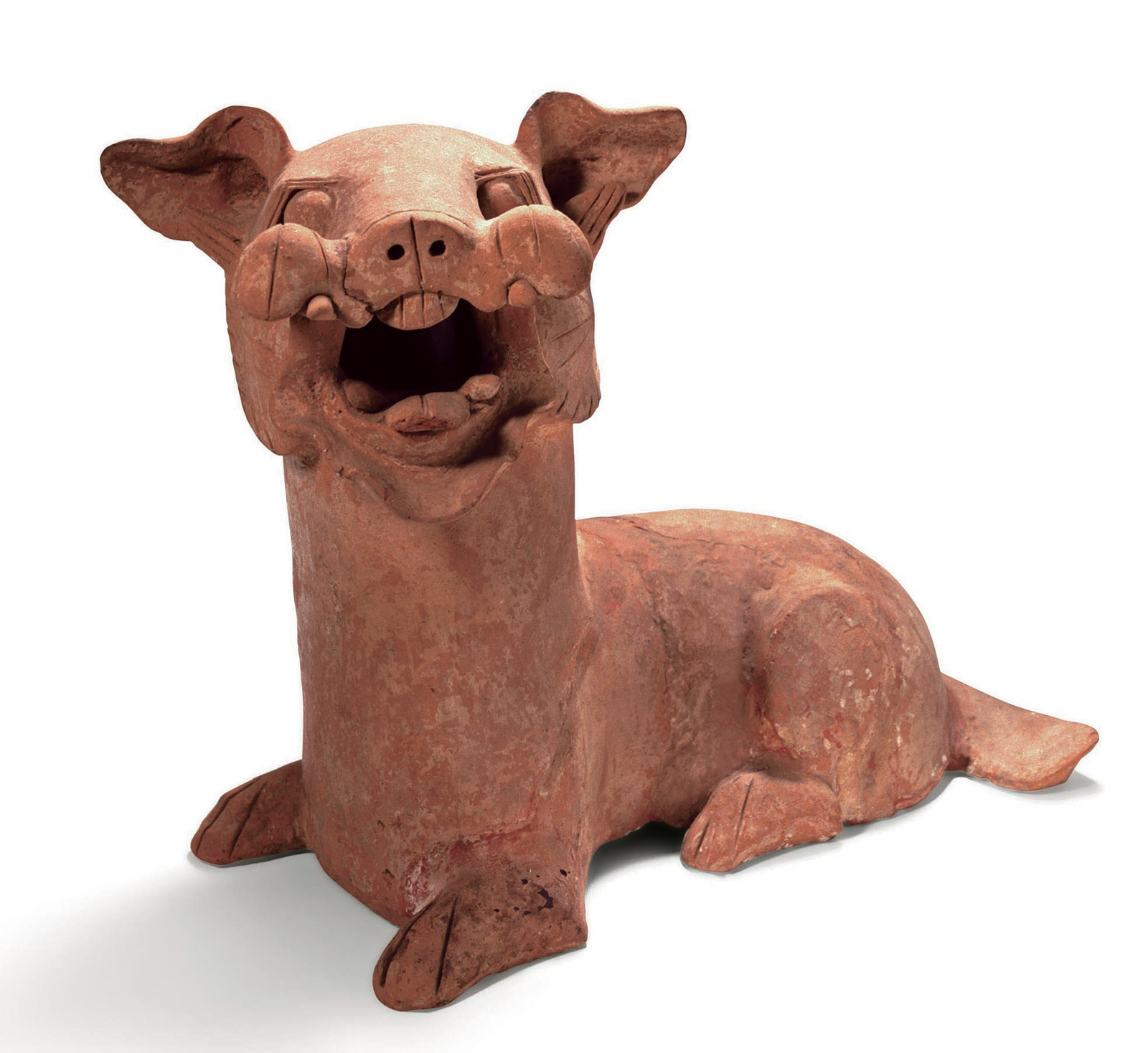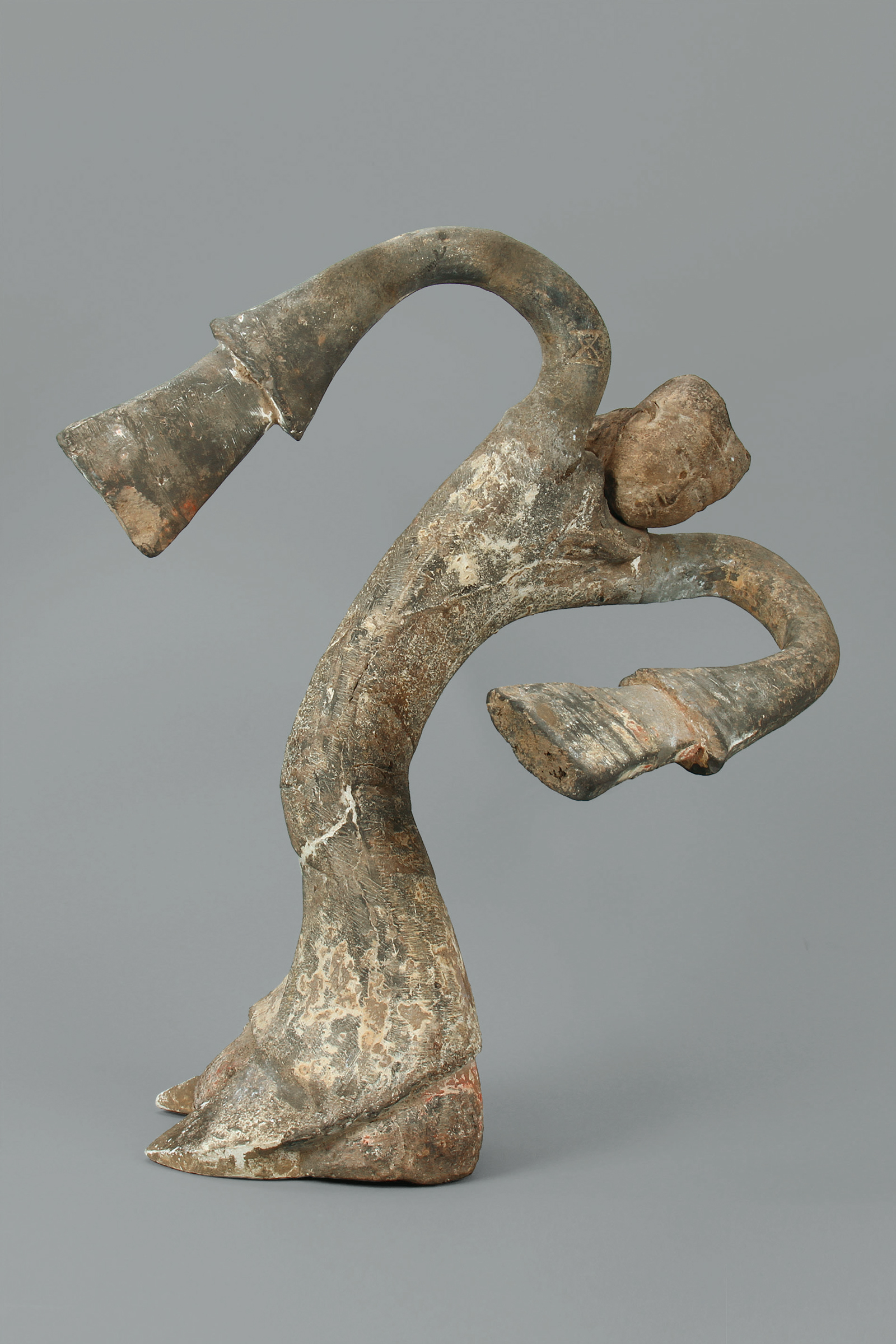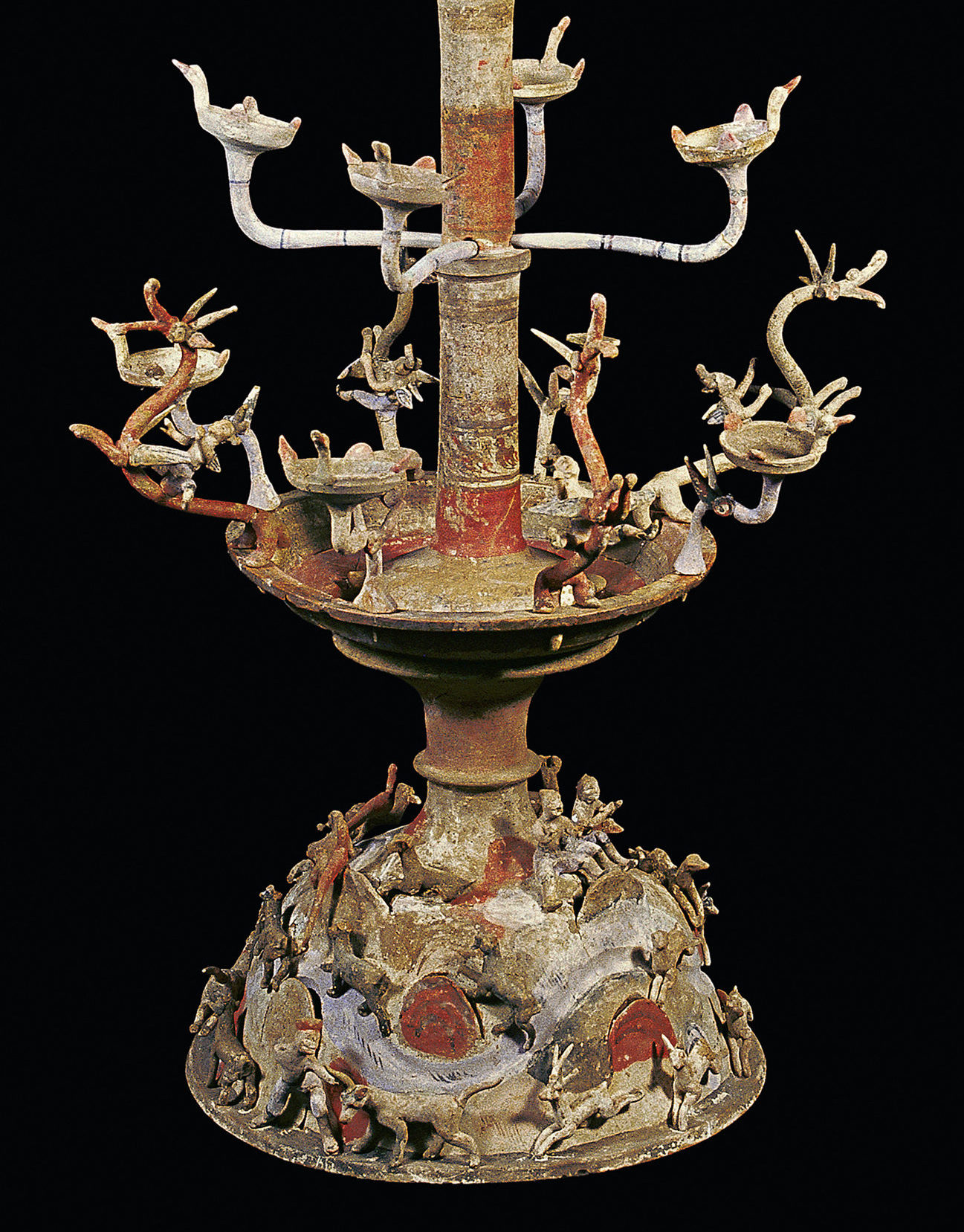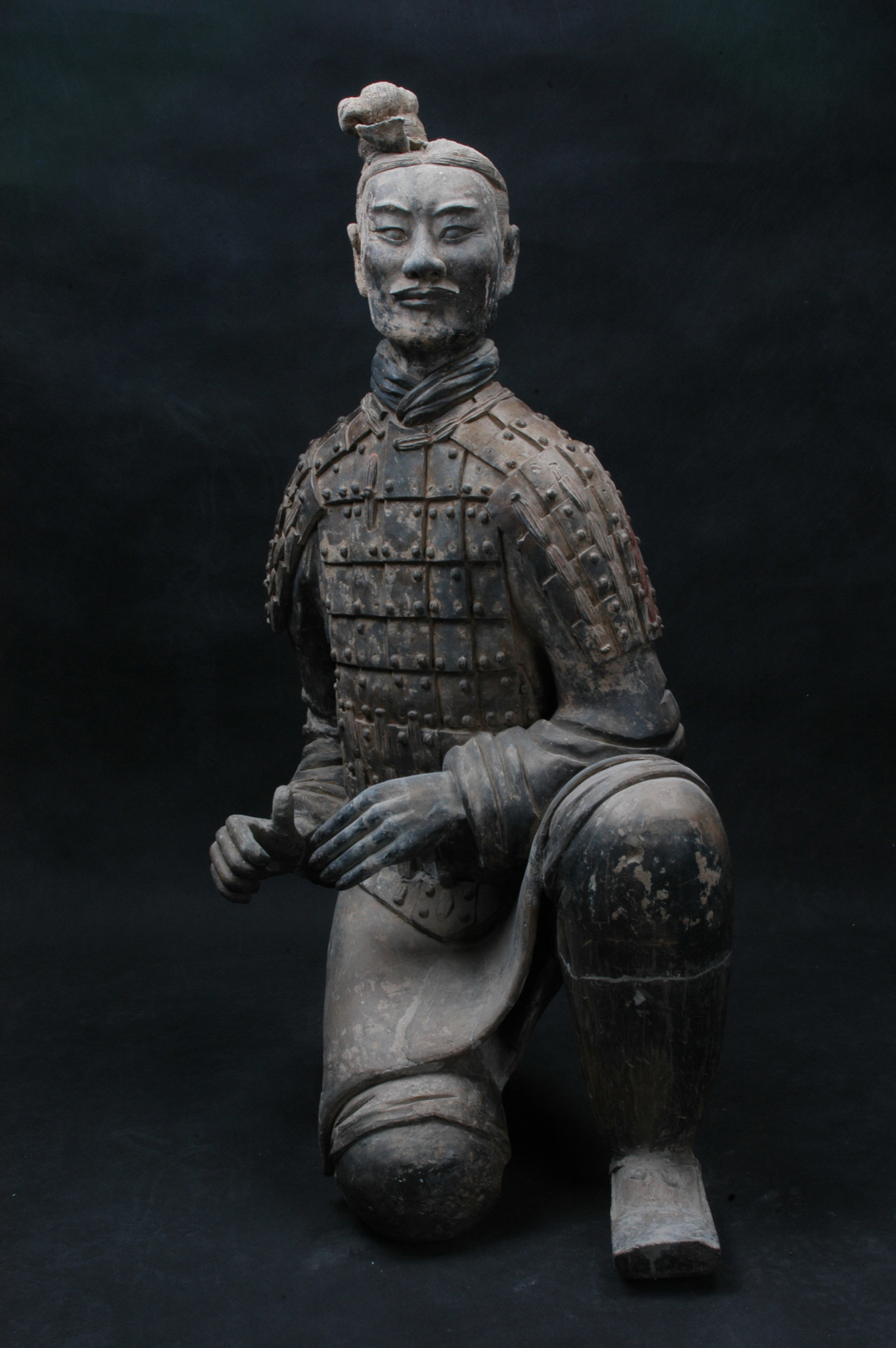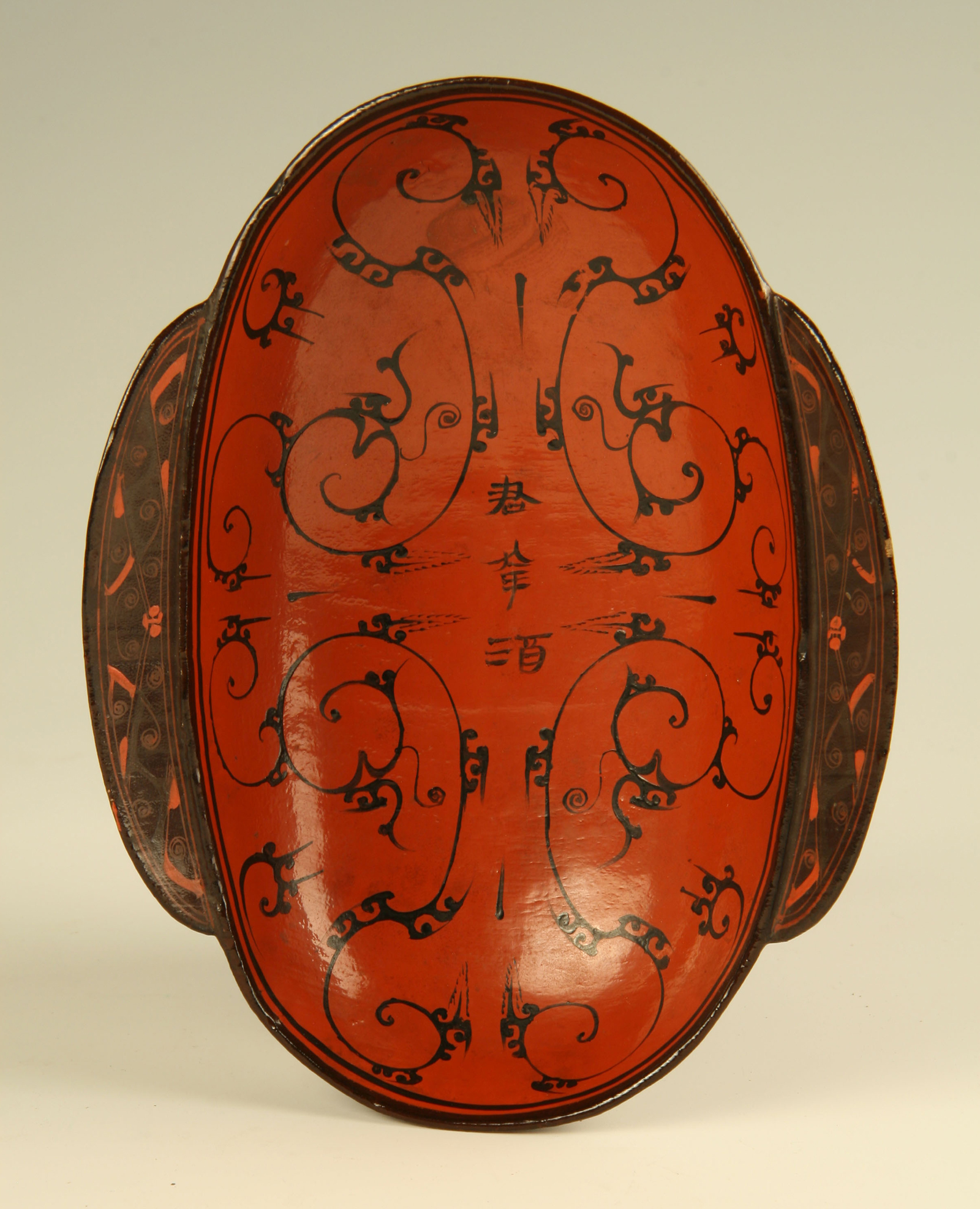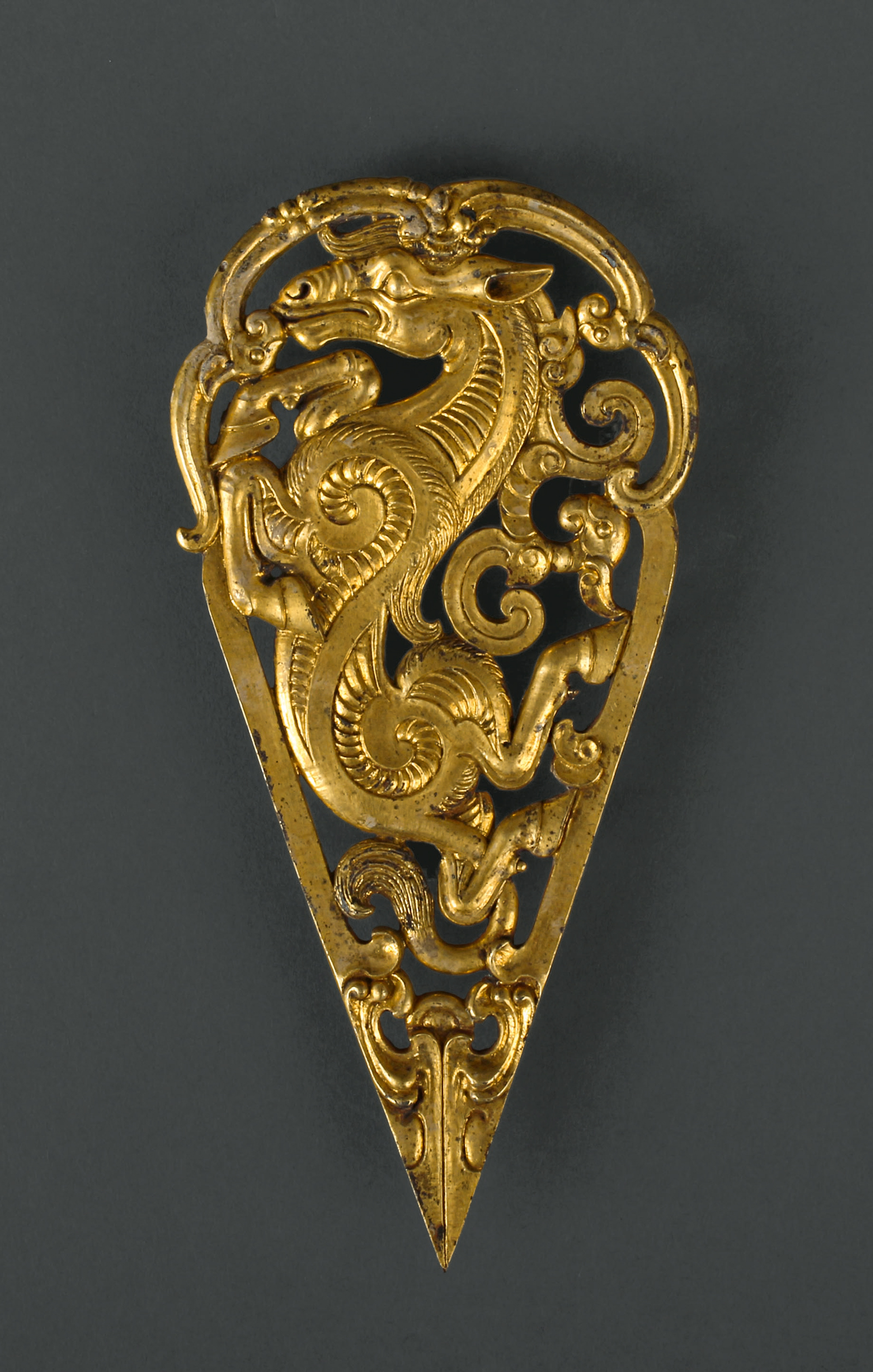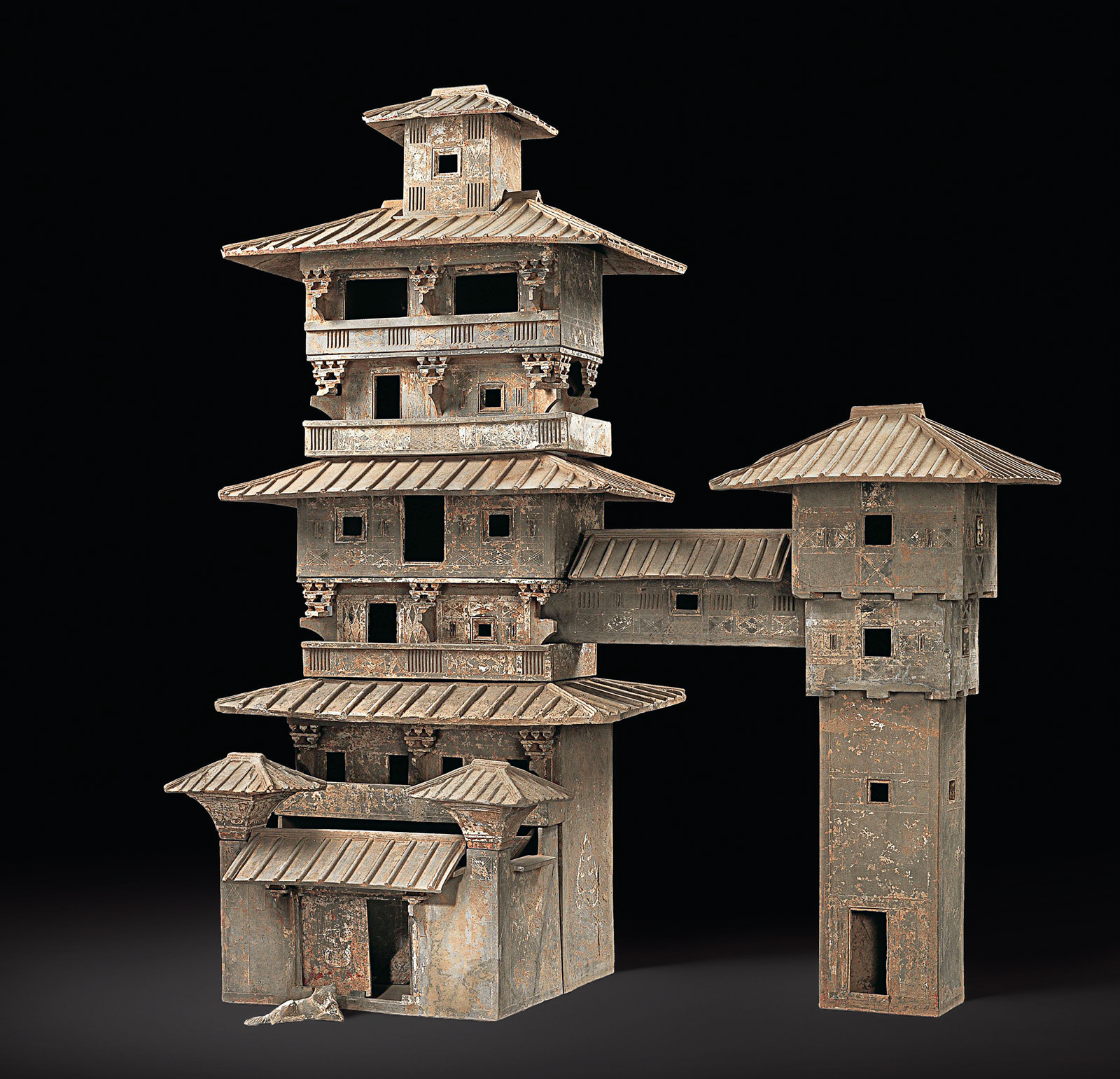French schoolchildren used to be taught that they were descended from the Gauls, a tribe that emerged around the fifth century BC. It is a common conceit of nineteenth-century nationalism that citizens of modern nation-states can trace their national origins back to a remote past. Not so long ago, a Japanese professor maintained that “Japanese values” were already in evidence more than ten thousand years ago among the Jomon period hunter-gatherers.
Much of this is nonsense. But the Chinese at least have a better claim than most people of being heirs to a unified culture that began roughly in the third century BC. This idea forms the basis of the fascinating exhibition at the Metropolitan Museum of Qin and Han dynasty artifacts. Almost all the objects lay buried for many centuries in tombs. That is why we can see perfectly preserved lacquer ware from a burial site in Sichuan, richly colored textiles from the far west of China, the body of Dou Wan, wife of Prince Jing, encased in a suit made of jade, and much more. And all these are more than two thousand years old.
In 221 BC, the Qin conquered six other kingdoms in what is now geographically a part of China. Under the first emperor, Qin Shihuangdi—reviled in Chinese history as a tyrant, but much admired by the no less brutal Mao Zedong—the Chinese language was unified in a common writing system. A common currency was introduced, as well as a system of weights and measures. Central power was exercised through an elaborate bureaucracy. The First Emperor also mobilized hundreds of thousands of slave workers and convicts to build roads, waterways, and, most famously, parts of what came to be known as the Great Wall.
The Han dynasty that toppled the Qin in 206 BC was in many ways more humane. Whereas the First Emperor allegedly buried Confucian scholars alive after burning their books, because, rather like Chairman Mao, he wished to start his reign on a clean slate and couldn’t tolerate dissent, Confucianism became the state ideology under the Han emperors. Rare stone tablets from the Eastern Han dynasty (AD 25-220), engraved with texts from Confucian classics, that once stood in front of a lecture hall, were excavated in the 1980s, and are now on show at the Met.
Zhixin Jason Sun, who curated the exhibition, writes in the catalogue that the dominance of Confucian thought “undoubtedly struck a heavy blow against intellectual development, and, consequently, had a lasting negative effect over the next two millennia.” This is one of the clichés of leftist Chinese propaganda. Confucianism, revised endlessly by scholarship over the last two thousand years, is too diverse a philosophy to lend itself to such a sweeping statement. The least one can say is that from the beginning Confucian ideas constituted a secular attempt to devise a moral political order. That it was often used—and still is—as a doctrine of bureaucratic oppression should not obscure its remarkably enlightened origins. Contrary to what the current Communist Party, or indeed the likes of Lee Kuan Yew, the late Singaporean prime minister, have made of it, an important strand of Confucianism, developed by the fourth-century philosopher Mencius, holds that people have the right to rebel against an unjust ruler.
Even though certain aspects of Chinese civilization, such as the uniform written language, do indeed go all the way back to the First Emperor of Qin, it is highly unlikely that most people living under his rule, or indeed in later dynasties, thought of themselves as “Chinese” in the same way citizens of the PRC or Taiwan, or in the global Chinese diaspora, do now. Still, the exhibition reminded me of an experience I had a few decades ago, when I visited the Chinese galleries at the British Museum in London after seeing a show of Russian Orthodox art. It felt like coming back to a familiar world of plain humanity, after being immersed in sacred images meant to awe the viewer in a display of religious power. And there is something rather Chinese about that.
What is striking even of the artifacts produced under the despotic Qin emperor is how down to earth many of them are. The soldiers in his terracotta army, protecting the emperor in his tomb, are not stylized figures, or symbols of otherworldly power, but individual human beings sculpted with a remarkable sense of realism. “Down to earth” is of course a relative concept, since the bulk of the objects on display were dug up from the tombs of aristocrats, whose lives would have had very little in common with the peasants who provided them with their food, dug the canals, served in the imperial armies, and built the first bits of the Great Wall.
Advertisement
It would also be a mistake to forget how different people in the distant (or even the not so distant) past were to most of us in the way they saw the world. Like the ancient Egyptians, the Chinese who could afford to think about such things at all were obsessed with notions of immortality and the afterlife. That is why we can still enjoy the glories of the terracotta soldiers in the Qin Emperor’s vast tomb that was a microcosm of life on earth. There were sculptures of pet animals too, and dancers and acrobats to entertain him, and model palaces, parks, and pavilions. Rivers of mercury wended their way through mountain ranges of bronze. And the bones of his concubines, sacrificed to comfort their ruler in the afterlife, were found inside the tomb as well.
From the First Emperor’s tomb to funerals in our own time, the traditional Chinese view of the afterlife is hardly any different from life on earth. People are still buried with paper money and model cars, as well as food. The superbly crafted Han dynasty bronze bowls, wine vessels, and lamps, and the exquisite red and black lacquer food containers, would have been of practical use to the deceased if they had indeed lived on as people believed they would. In life after death, the Chinese grandees were still expected to take delight in the beauties of nature, splendid animals, good food and fine wines, as well as graceful dancers and bed companions. Having been beautifully preserved underground for thousands of years, these objects delight us still.
One of the attractive qualities of Qin and Han culture, shared by the arts of many later eras, is their cosmopolitanism. Chinese artisans and their patrons loved to adopt and adapt designs and shapes imported from Iran, India, Central Asia, and perhaps even ancient Greece. Golden ornaments with horse motifs that predate the Qin dynasty show the influence of Scythian designs. Gold beads excavated from Han tombs are worked with fine filigree that suggests Persian or Bactrian origins. Even during periods of oppressive central control, China was never really closed to outside influences.
This high level of sophistication creates the illusion that if we were to meet a cultivated Chinese of the second century BC at a dinner party today, we would have much to talk about. It is easy to forget that the past remains another country. But perhaps it isn’t a complete illusion. Despite periods of horrendous violence, savage wars, and cruel oppression, something of the humanist spirit of ancient China has survived. In another thousand years, if mankind is still around, Chairman Mao’s attempt to stamp it out will look like a tiny blip in Chinese history. There is consolation in that.
“Age of Empires: Art of the Qin and Han Dynasties” is on view at the Metropolitan Museum of Art through July 16.


